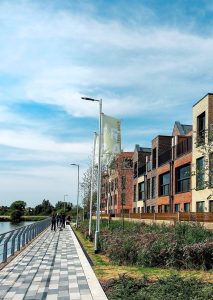Once singular buildings and their operations are modelled and understood, a sliding scale of efficiencies starts to take shape where multiple buildings and their energy loads are combined.
Community-scale generation and storage can become a more attractive option than stand-alone systems, once tens or hundreds of properties are connected within the same proximity. With increased levels of multi-vector control, including predictive control, these efficiencies become even more pronounced.
Understanding a development’s layout and predicted demands in combination with proposed generation and storage capacities at the design stage can enable game-changing levels of combined system infrastructure to achieve zero carbon emissions.
Already our team has helped to develop several innovative tools and workflows encompassing technology performance, building energy modelling, network energy modelling and business models to provide new capabilities, quicker computation and more accurate results.







